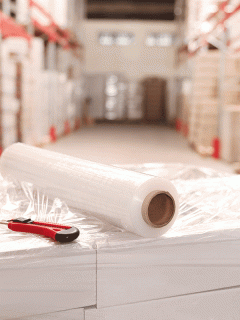Safe working conditions are part of everyday operations and determine work processes. No company can afford downtime, so it is all the more important to avoid sources of danger and thus accidents and to act with foresight.
Safety in the workplace is a crucial issue that is prescribed by laws, ordinances and rules: Occupational Health and Safety Act (ArbSchG), Industrial Safety Ordinance (BetrSichV) and Workplace Ordinance (ArbStättV), to name but a few. The aim is always to provide workers with a safe working environment, to avoid hazards and to protect them from accidents and occupational diseases.
Besides appropriate Protective clothing and functioning machines, many other factors play a major role. Whether on company premises, in production halls or warehouses and also on construction sites: Barriers are used in many places and fulfil different functions.
On the one hand, barriers draw attention to hazardous areas and secure the site. On the other hand, they also protect against unauthorised access or simply provide separated parking spaces. Mobile barriers cover many areas and provide maximum flexibility.
Legal labelling obligation
The Workplace Ordinance (ArbStättV) is directed at the employer and includes the minimum regulations for the safety and health protection of employees when setting up and operating workplaces. The ordinance is based on the EC Workplace Directive 89/654/EEC, which requires European implementation.
In addition to the regulation on the protection of non-smokers, the focus is on the proper condition of the furnishings and maintenance of the workplace. This includes, for example, the avoidance of falling accidents on defective floors or transport accidents caused by unmarked Transport routes.
Section 2.1 of the Workplace Ordinance regulates measures to protect against particular hazards, such as protection against falls and falling objects and entering hazardous areas.
Workplaces – what does it cover?
The term workplace refers to all work rooms or other rooms on the company premises, as well as all outdoor places on the company premises and also construction sites where employees are active in the course of their work.
In particular, the workplace refers to places to which employees have access during their working hours and in order to carry out their work, and to facilities that serve to operate the workplace.
This includes:
- Traffic routes, escape routes, emergency exits, storage machinery and ancillary rooms, sanitary rooms, canteens, break and stand-by rooms, first aid rooms and shelters
- Safety lighting, fire extinguishing equipment, supply equipment, lighting systems, ventilation and air-conditioning systems, signalling systems, power distribution systems, doors and pipes, moving walkways, escalators, loading ramps and fixed ladders
When must a barrier be installed?
Appropriate protective devices are mandatory when there is a risk of employees falling or danger from falling objects. Workplaces and traffic routes must then be equipped with protective devices to protect employees from injury. From a fall height of one metre, there is a risk of the worker falling and an appropriate barrier must be installed.
But a simple barrier is not enough for every job. In the case of a roofer or industrial climber, such a protective device cannot be fitted. The employer must ensure occupational safety by other means.
If there are other hazardous areas, e.g. areas that should only be entered with special equipment, the hazardous areas must also be marked. In addition, access must be protected against unauthorised entry and workers entering hazardous areas must be provided with appropriate protective equipment.
From traffic cones to scissors grids
Not all mobile barriers are the same! Not every barrier is suitable for every application. Depending on the application, it is important to determine which barrier is suitable.
Guide cones Mobile barriers are easily recognisable due to their orange signal colour and are suitable for securing short-term danger or emergency scenes. A deep pothole on the company railing can be marked in this way or an area can be marked for maintenance work at short notice. The cones can also be connected with hooks and chains.
Somewhat more stable for use are barrier posts. By filling the base with sand or water, the barrier is additionally weighted down. Unintentional displacement is thus avoided. With a height of almost one metre, the posts are suitable for securing danger spots, but also for separating and securing access roads.
Mobile barriers for every purpose
In order to ensure safety in production and storage facilities, mobile barriers are ideally suited for almost any purpose. It must be possible to secure danger zones for both long and short periods, and traffic routes can also be marked to prevent accidents. By implementing the legally prescribed measures in the area of occupational health and safety, the health of the employees is ensured at the same time and downtime is avoided. Appropriate protective measures should therefore be well planned and thought through.
If you also need support in selecting the right barrier, we will be happy to advise you with individual solutions.


















